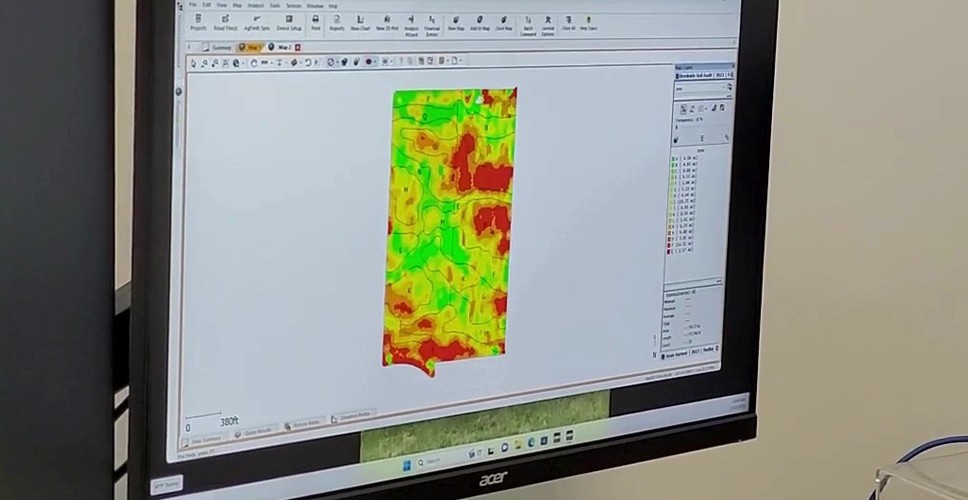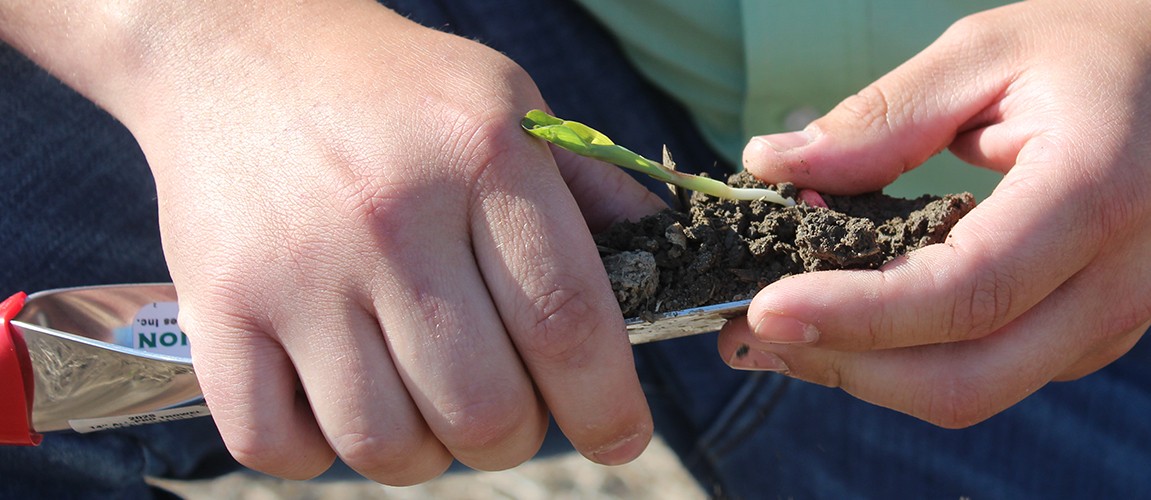
Optimizing Farming Strategies: Seasonal Data Analysis and Soil Sampling
Winter is the ideal time for farmers to analyze data from the previous growing season. The data reveals what worked well and where you might need to make some adjustments—and you can use this insight to fine-tune your plans for the next planting season.
For instance, reviewing the data from soil testing can help you determine which fields may need to be managed differently to optimize growth in the next season. Sometimes, additional soil testing may be needed in your fields for better insight. The better you understand your soil's composition, the better you can give your crops the nutrients they need to thrive.
Throughout this guide, we'll explore how to analyze your winter data and leverage these insights to make smart adjustments for spring. We'll look at the importance of soil sampling and how it empowers successful nutrient management and crop growth
Reviewing your strategy
Reviewing your plans from the previous seasons during the winter period involves:
Evaluating variable rate planting maps and yield data
The first step in refining your approach for the new season is to analyze variable rate planting maps alongside yield data.
Variable rate planting maps show how well specific planting strategies—like seed rates, fertilizer application, and other inputs—performed across different sections of your fields. By comparing them with actual yield data, you can pinpoint areas of success and those that may need improvement.
This validates what you did in the past and sets you up to improve for the upcoming season.
Soil sampling and the H2Ohio program
As you look toward the new planting season, it's also time to consider your soil health practices. This time of year presents an ideal opportunity to identify fields that need updated soil sampling.
Notably, the H2Ohio program offers financial support to farmers across Ohio who are committed to sustainable agricultural practices. But one of the requirements to get that funding is to have up-to-date soil tests.
These tests provide critical information about soil nutrient levels, ensuring that your farming practices are environmentally friendly and economically sound.
Nitrogen soil testing
Nitrogen soil testing is an important step in this process. This test measures the nitrogen in each soil sample, especially after fall manure applications. Testing in the spring before side dressing will give you valuable information on soil fertility for the upcoming growing season.
To conduct a nitrogen soil test, soil samples are collected from different parts of your fields. These samples are analyzed to determine the current nitrogen level in the soil.
Based on the results, you can make informed decisions about how much nitrogen to apply to your soil. This will help you keep nutrients well balanced to protect the environment and make your farming practices more cost-effective.
Using nitrogen soil test results
You can use the results from nitrogen soil tests to create precise application plans:
-
Variable rate application: By applying nitrogen at different rates across your fields based on soil test data, you ensure each area gets the right amount of nitrogen. This maximizes fertilizer efficiency and crop potential.
-
Straight rate application: When there’s little variation in nitrogen requirements across the field, applying a consistent rate of nitrogen simplifies operations while efficiently meeting crop needs.
Both strategies work towards environmental standards by minimizing nitrogen runoff and leaching. They also help optimize your investment in nitrogen fertilizers by guaranteeing effective use and reducing unnecessary application costs.
The benefits of seasonal data analysis
Analyzing seasonal farming data offers several benefits that have a direct impact on farm management:
-
Performance evaluation: Assess how well your strategies—like planting and fertilizing—worked by comparing them to yield results.
-
Informed decisions: By studying the data, you can make smarter choices about when to plant, which crops to grow, and how to manage resources like water and nutrients.
-
Precision farming: Using data from planting maps helps you apply inputs like seeds and fertilizers more efficiently so they’re used only where they're most needed in the field for optimal growth.
-
Resource efficiency: Data analysis aids in managing resources like water and nutrients more effectively, saving money and reducing your operations' environmental impact.
-
Risk management: With data-driven insights, you can anticipate and handle risks like pests or bad weather, leading to better crop protection and higher yields.
Closing thoughts
As winter transitions to early spring, it's an ideal time to reflect on the past year's farming efforts. This critical analysis allows you to assess the effectiveness of your previous year's strategies and identify areas for improvement as you prepare for the upcoming season.
Additionally, it's the perfect time to identify fields that would benefit from updated soil sampling and nitrogen testing, laying a solid foundation for informed decision-making in future farming plans.
Analyzing Seasonal Data at Precision Agri Services
At Precision Agri Services Inc., we meticulously analyze seasonal data, including variable rate planting maps and yield results, to refine our approach for the upcoming season. This comprehensive review helps us pinpoint areas needing adjustment and guides us in determining which fields require updated soil sampling.
We test each soil sample ourselves, which underpins our data-driven approach. We use a GPS to guide us in the field and randomly collect 10-12 soil cores from sample areas, ensuring they're seven inches deep into the soil surface for consistency.
Contact us today for more information on our services, and to see how we can help you collect and analyze your farm data. Let’s make your next yield the best yet!


